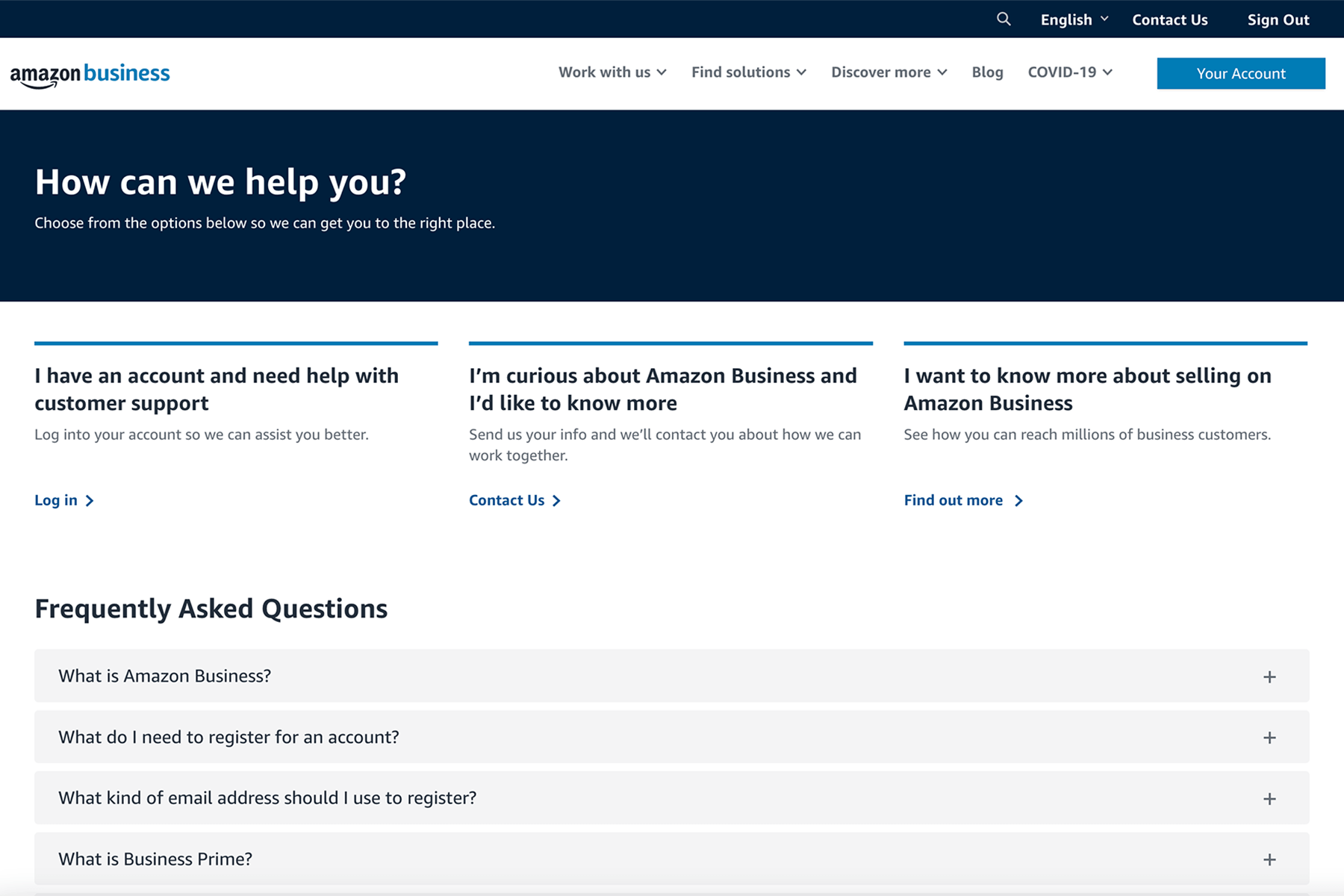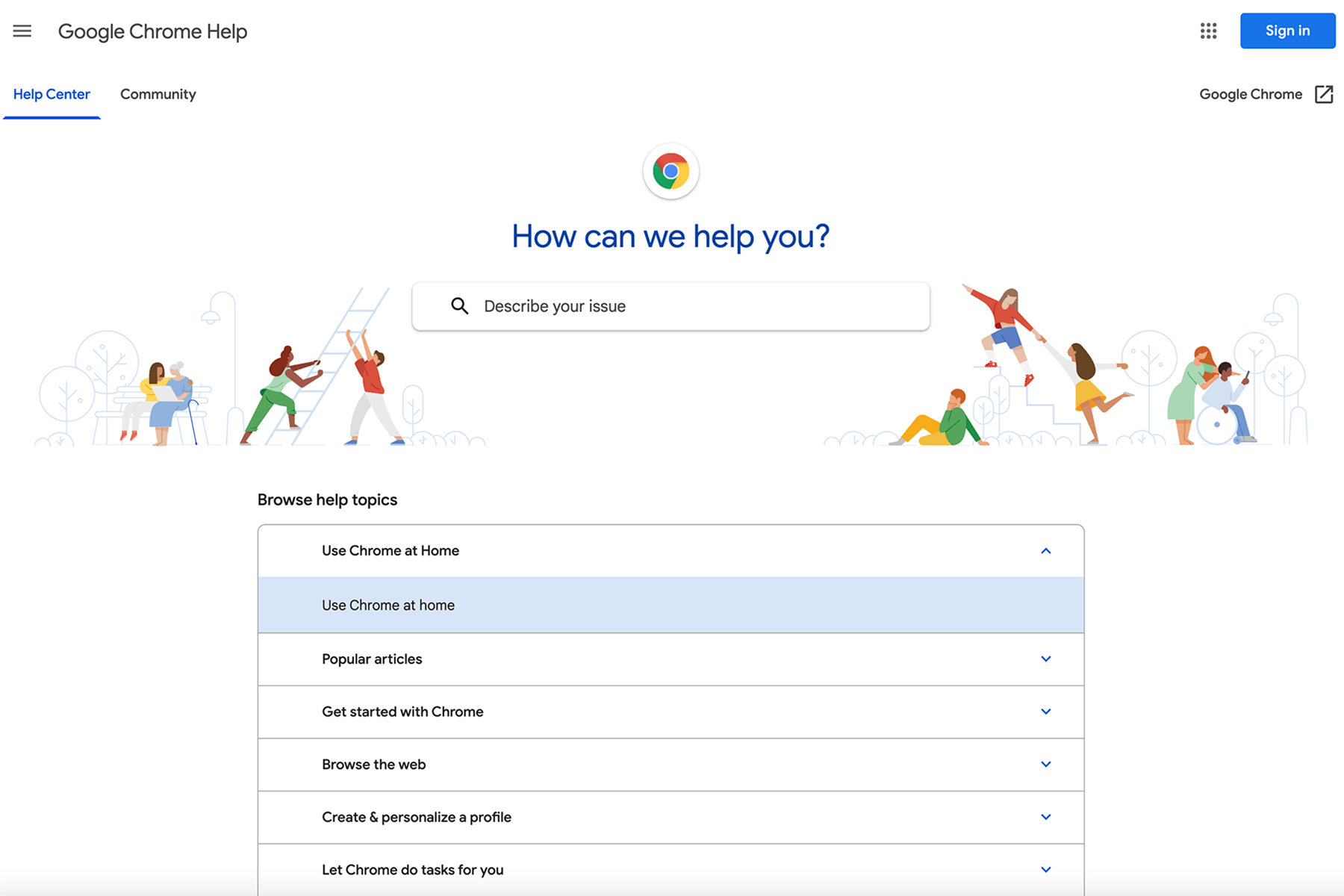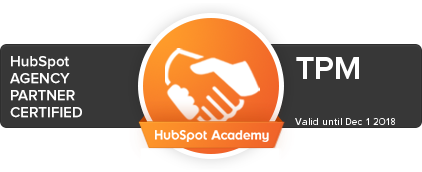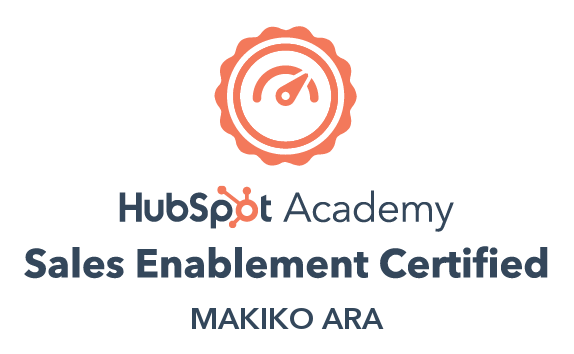Send Your Clients to Cloud Nine with Customer Enablement — and How TPM Does it Best
- Dean Ara
- April 1, 2022

Just because you got the sale doesn’t mean your job is complete. The sale is merely a milestone of the larger buyer journey. So, what comes after the sale? Enter customer enablement.
Customer enablement ensures your customers have everything they need to feel satisfied with their purchase. Enabled customers are happy and loyal customers. And better yet, nurture them to become fans and invaluable brand advocates.
In this post, we’ll take a deep dive into customer enablement. You’ll learn the who, what, where, and why — complete with case studies on what makes a great customer experience.
What is Customer Enablement?
Customer enablement is an umbrella term that captures the customer experience (CX). It exists as programs and will look different depending on the maturity level of the organization. Customer enablement programs can be as simple as a post-sales marketing plan to a full-blown cross-functional customer success team.
Sound familiar? That’s because your organization is probably on the right track. Customer enablement isn’t something that’s inherently different than what already exists. It has already existed in some capacity, just under different names, like customer service, technical support, etc.
To wrap your head around customer enablement, think about your existing customers and ask yourself:
- What do they need?
- How can we help?
- What are they asking?
- How can we add value?
- Do they feel important?
Also consider customers who have churned in the past:
- Why did they leave?
- Is there anything you could have changed about their experience to make them stay?
Churn analysis, a part of a win/loss analysis, is a method of measuring the performance of your marketing assets. Here, we’re not going into that level of detail. Giving thought to these questions puts you in the mindset of your customers and opens your eyes to opportunities where you can make them happy.
Why Do You Need Customer Enablement?
With customers at the foundation of your business, their loyalty to your brand is essential. How do you make sure your buyers stick around once they have made a purchase? You ensure they’re satisfied at every stage of the buyer’s journey.
Contrary to the traditional funnel metaphor, the buying journey is not finite — it’s a circular journey complete with customer enablement practices and after-sales experiences that contribute to customer retention, upsell, and advocacy.
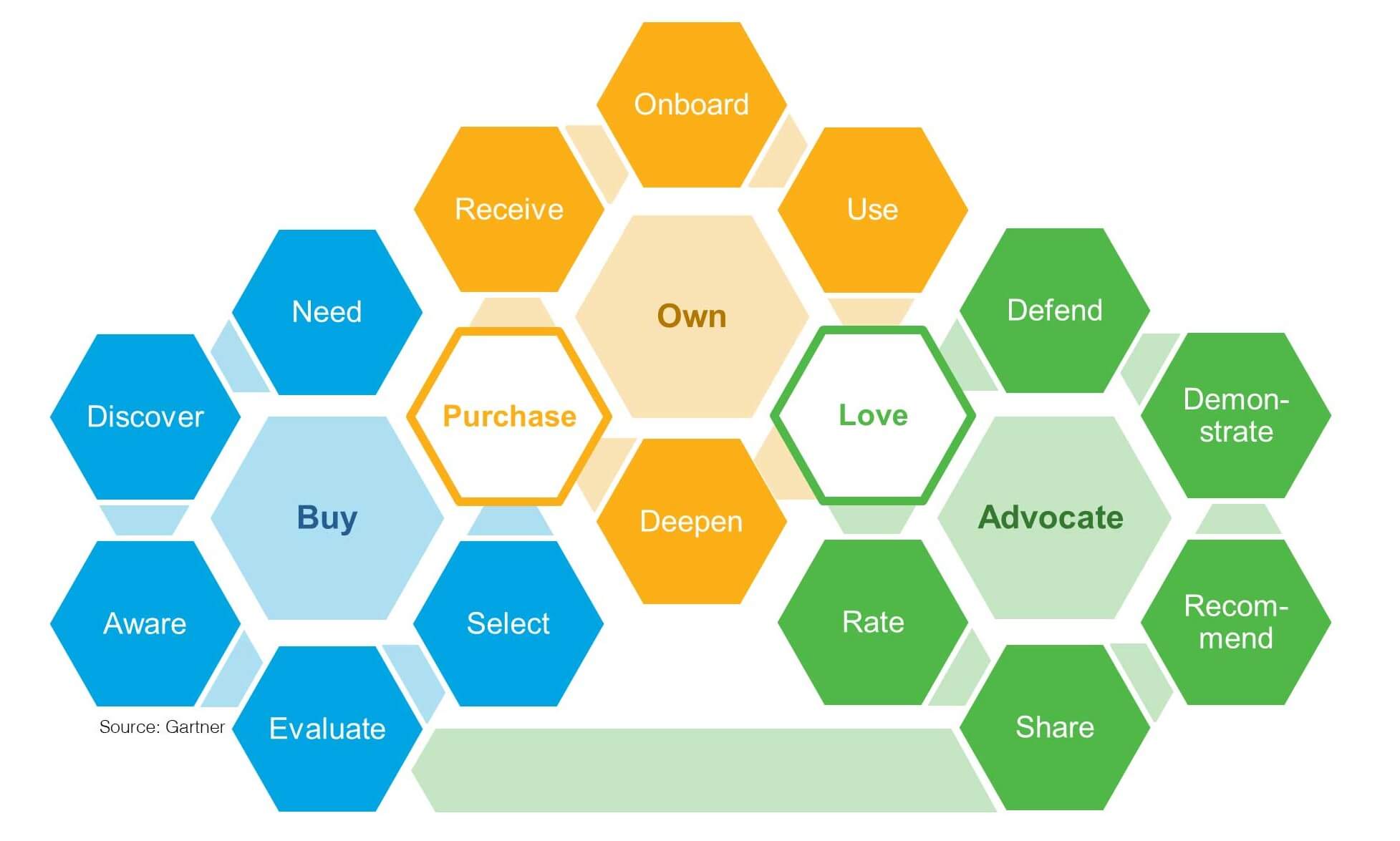
Image source: Gartner. Introducing the Buy/Own/Advocate Customer Experience Journey.
https://blogs.gartner.com/augie-ray/2016/08/12/introducing-the-buyownadvocate-customer-experience-journey/
Customer Enablement and Sales Enablement: Where Does One Begin and the Other End?
Sales enablement is a strategic, collaborative discipline designed to increase predictable sales results — from both new and existing customers. Customer enablement, also known as customer success, is a process that supports this discipline.
Most organizations have a focus on customer success to some extent, each is at a different stage of maturity. In high-maturity organizations, customer success teams are typically stakeholders and work closely with sales enablement professionals and other cross-functional teams to build end-to-end enablement programs.
Customer enablement maturity scale
Low
- There are no shared customer enablement processes or goals across stakeholders
- The creation of customer enablement content falls mostly on the shoulders of marketing teams
Medium
- A formal customer success team is in place
- Customer success team might be sharing goals and data with sales, marketing, and product teams
- Important processes are standardized, and data is being used to track against goals
High
- Customer success is fully ingrained into the organization’s culture
- Customer success teams work closely with sales, marketing, human resources, and sales enablement professionals to build end-to-end enablement programs
When an organization orients themselves around the circular buyer journey, customer enablement becomes part of the picture. Customer enablement loops your customers back into the sales process through a series of after-sale experiences, ultimately encouraging your customers to stick around, become brand advocates, and make another purchase.
Enabled customers are happy customers, and happy customers are more likely to share their success stories and become a reference. And with 92% of individuals trusting word-of-mouth recommendations above all other forms of advertising, happy customers are priceless.
What Makes a Great Customer Experience?
Here are 4 best practices to jumpstart customer experience and enable your customers.
1. Encourage customers to share feedback
One of the best ways to inspire customer loyalty is by encouraging your customers to share feedback. Hang out where your buyers spend their time: social feeds, discussion boards, online reviews. Ask happy customers for testimonials and case studies to promote your business and capture the success of your customers.
This content is gold for sales enablement, providing valuable proof points and customer validation to build trust with new prospects.
Further validate the success of your product by strategically measuring customer satisfaction. Start by defining the goals your customers want to achieve with your product. Collect baseline numbers based on these goals and circle back 6 to 12 months after the sale to measure the impact. This validates return on investment (ROI) and reinforces the success of your customers.
Pragmatic Institute recommends collecting customer references twice per sale — once right after signing the deal and a second time after onboarding or implementation, to see if their original feedback still holds true. This process gives you a comprehensive understanding of your buyer’s expectations throughout their journey.

2. Create customer education content
If you find yourself struggling to keep up with customer service, or if you’re simply wondering how to scale your customer support, a customer education program might be a solution for you.
Customer education is content designed to teach customers how to use and find value in your product throughout the buyer journey. Before a sale, customer education teaches buyers about the market and your product, and, after the sale, it teaches users how to use your product.
Once the sale is closed, content plays a key role in customer retention and loyalty. By delivering value throughout the buyer journey, your customers stay engaged and are more likely to become advocates for your brand.
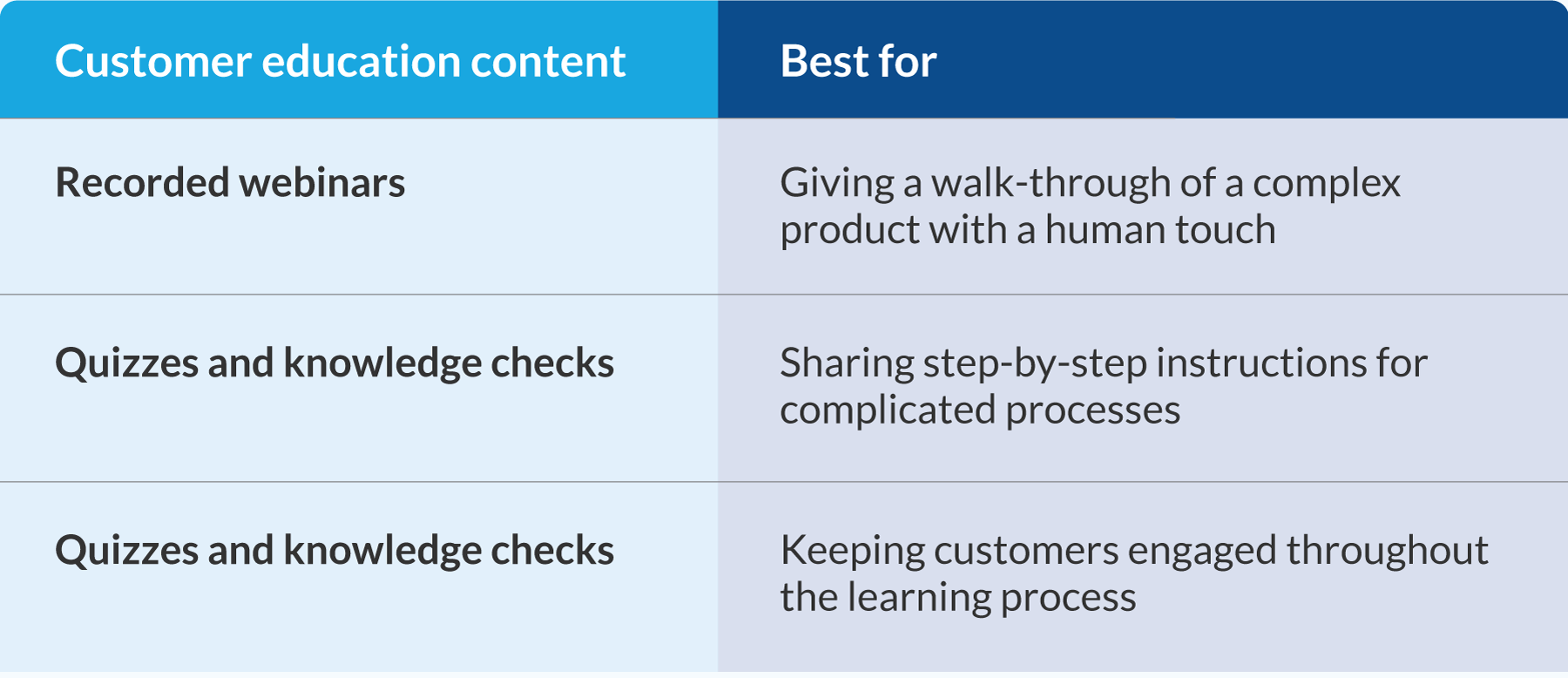
3. Build a customer success team (or start one if you haven’t already!)
Customer success teams are committed to helping customers reach their goals. They do this by being proactive — providing customers with helpful resources and reliable product support — with the hopes of developing a mutually beneficial relationship.
These teams are made of several functional roles. Depending on the maturity of your organization, your customer success teams might consist of the following people:
- Customer success managers (CSMs)
- Customer support representatives
- Onboarding or implementation representatives
- Professional services experts
- Upsell and cross-sell reps
CSMs are keystones to your organization. The insight they have is extremely valuable to other departments: revenue teams rely on their data to predict growth, product teams use their feedback to create new features and fix bugs, and marketing looks for customer advocates and helpful messaging. From this perspective, customer success teams are integral to sales enablement.
The cost of customer success should be looked at as a percentage of revenue. Using annual recurring revenue (ARR) for your calculations sets a baseline, no matter the maturity level of the organization. Organizations should expect to spend 10% (or less) of their ARR on customer success management on average.
4. Fill gaps in customer self-service experience
Customer self-service experiences are made up of different channels – such as knowledge bases, artificial intelligence (AI) chatbots, customer portals, and community forums — that answer customer questions.
Creating an omnichannel self-service experience is key to delivering on customer experience. Customers want to find answers on their own so make it easy for them to do so. Fill gaps and address friction points your customers come across in their buying journey. Ensure downloadable PDFs are user-friendly on smartphones. Keep your FAQ pages up to date with timely questions.
Here are a couple of the best omnichannel self-service experiences out there according to HubSpot:
TPM Tip
Play your cards right by using SEO strategies in your omnichannel experiences.
Knowledge bases can work double duty — both serving as a preferred self-service channel for customers and educating prospects on how your solution solves specific needs or problems. Optimize individual pages on your site for rich middle-to-bottom of funnel keywords that help customers become successful.
How TPM Does Customer Enablement Best
In the financial technology (“fintech”) industry
Onboarding global merchants is long and arduous by nature, and PayPal wanted to streamline this process for their customers. They commissioned TPM to create an interactive onboarding guide for their global accounts.
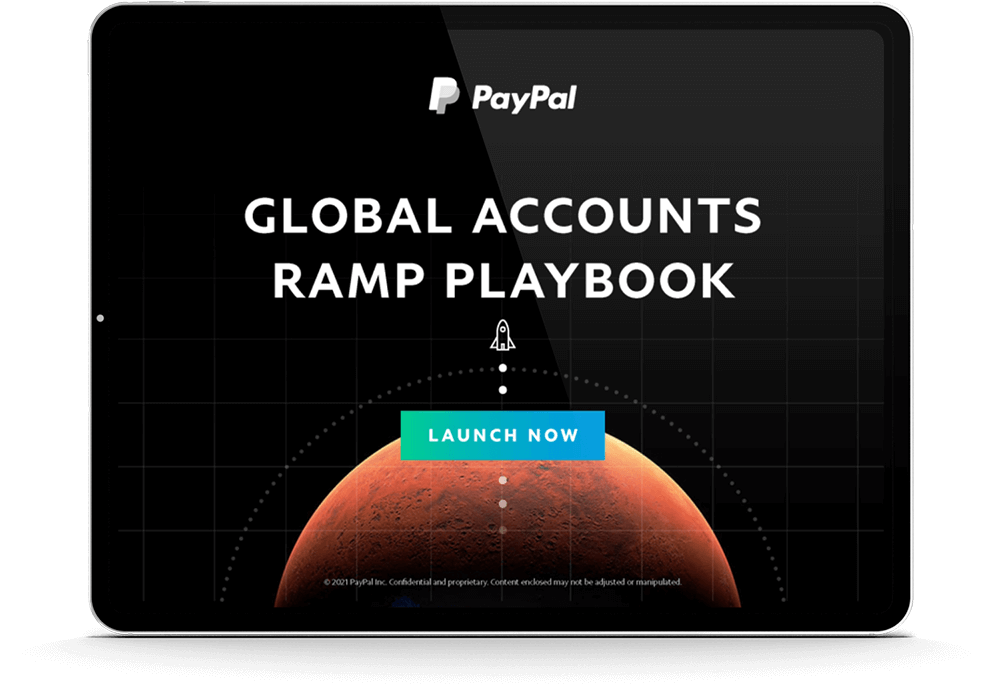
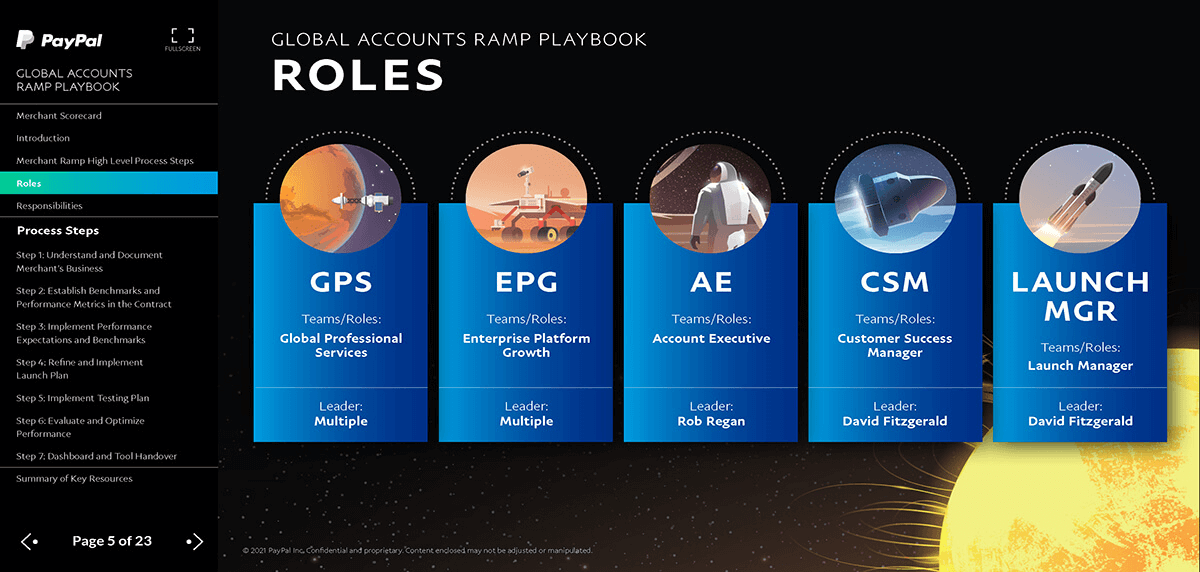
The Global Accounts RAMP Playbook outlines the typical ramp process for a merchant — workflows of contract signing, migration, integration — and clearly maps the roles responsible for each step in the process. The overall goal was to reduce the time it takes to ramp a merchant up to full transaction capacity.
The end result? PayPal achieved their goal, to say the least. “Go live” implementation time was shortened from 6 months to 6 weeks — cutting ramp time by 75%. This is a win-win for everyone: merchants see their return on investment sooner and PayPal has a surprised and delighted customer in their back pocket.
In the product marketing industry
A critical part of customer enablement and retention is demonstrating ongoing value to your customers. Conducting business reviews with your customers is a way to do just that.
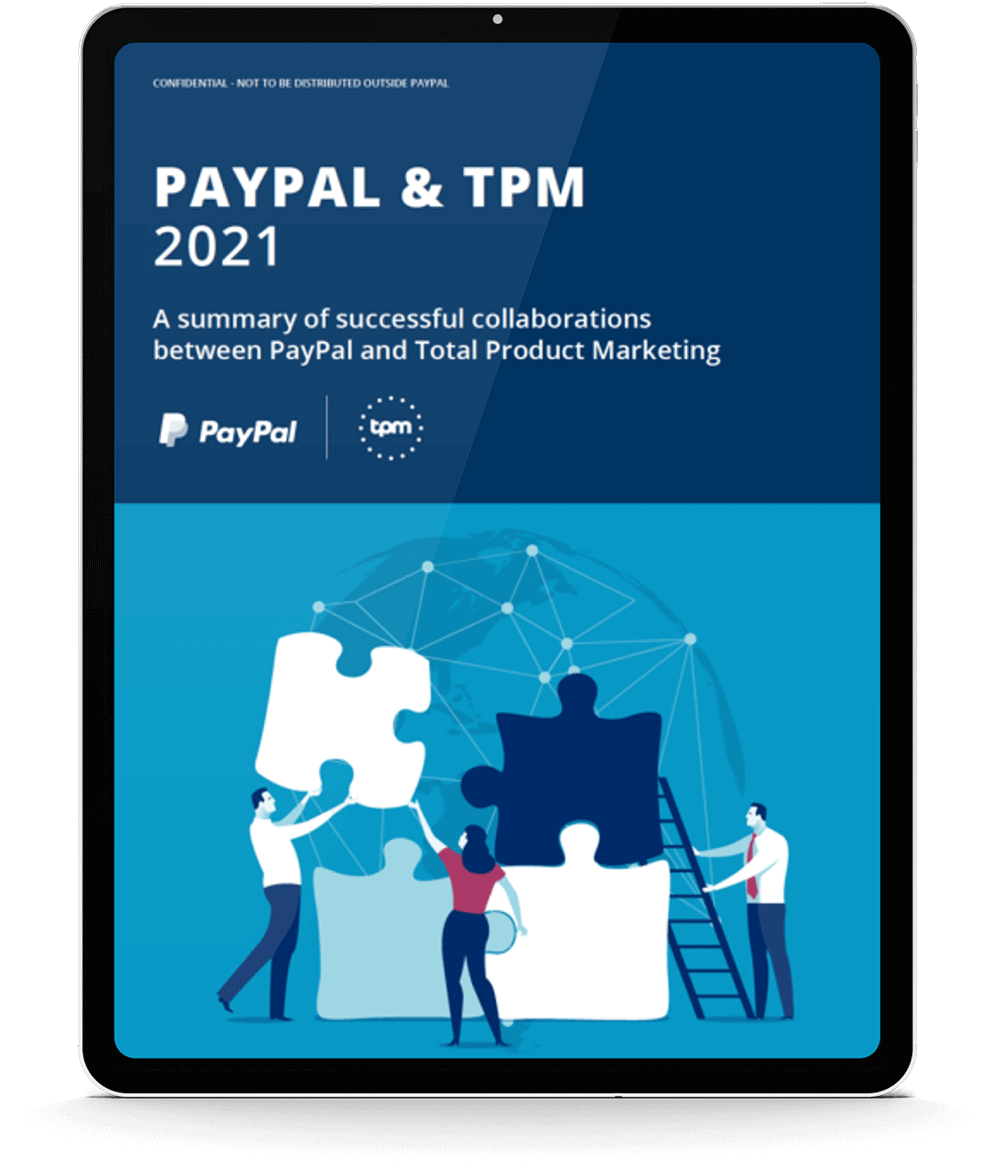

Annual business reviews are a customer success strategy we use at TPM. Every year, we present a polished document to our clients that summarizes successful collaborations we’ve had over the last 12 months. This strategy steps you out of a client-vendor role and into more of an advisor and partnership role. It builds trust that solidifies the relationship with your client.
In a nutshell, this document says, “Look at all the goals we’ve achieved, the relationships we’ve built, and the scope of work we’ve completed together. We’ve come a long way — what an incredible journey it’s been!”
It’s easy to get caught up in the day-to-day, for both yourself and your customer. Suddenly 6 months, 12 months, goes by and — what did you accomplish? How did you make an impact? Making the time to do business reviews goes a long way in demonstrating your value and staying top of mind for future opportunities.
Ready To Turn Your Customers into Advocates?
The experts at TPM know how to create buying experiences that will make your customers want to shout it from the rooftops and tell all their friends. Contact us today!
Enjoyed this read?
See our full collection of Sales Enablement blogs to close more deals, faster!

